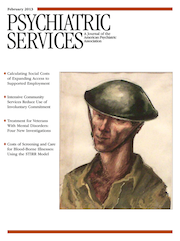Prescribed: Writing, Filling, Using, and Abusing the Prescription in Modern America
This interesting book is filled with nuggets of information about that essential unit of medical practice—the prescription. The book comprises ten chapters contributed by various authors and is coedited by Jeremy Greene, who is a physician and medical historian at Harvard University and Harvard Medical School, and by Elizabeth Siegel Watkins, a professor of anthropology, history, and social medicine at the University of California, San Francisco. Although the writing is at times dense and academic, it is well worth reading, because it provides insights into the history of prescribing practices that physicians now take for granted.
The book’s introduction highlights how recently our current system of prescription-required drugs came into existence. When the U.S. Food and Drug Administration (FDA) was created in 1906, its original function was not to approve drugs but rather to require drug manufacturers to honestly label them. Although physicians wrote “prescriptions” at the turn of the century, patients were free to purchase any remedy available from a pharmacy, whether prescribed or not. In 1914, Congress passed the Harris Narcotic Act, which designated morphine as the first drug to require a prescription. This act was in response to the growing problem of morphine addiction, or what was called “morphinism.” But it was not until 1951, with the passage of the Durham-Humphrey Amendment, that Congress mandated prescription status for a list of drugs approved by the FDA.
A theme running through many of the chapters is that changes in prescription policy are often rancorous political issues, pitting organized medicine against various other stakeholders, such as pharmacists, consumer groups, and the FDA. For example, chapter 4, “Deciphering the Prescription,” recounts the history of efforts to require that a brief, consumer-friendly “patient package insert” (PPI) be included with all prescriptions. From our 21st century vantage point—when drug information is readily available to anyone with Internet access—we may find it odd that such a proposal could have been controversial. But the American Medical Association strenuously opposed the proposal, arguing in 1975 that this constituted excessive government regulation of medicine and that “the physician is the one who is able to ascertain the patient’s physical and emotional characteristics and whether a particular patient has need of such information.” Nonetheless, in 1980 the FDA, influenced more by consumer groups, released rules mandating PPIs for all prescription drugs. But two years later, in an illustration of the sometimes adversarial relationship between the White House and the FDA, President Ronald Reagan revoked the rule in order to trim the size of government. Thus Americans are left with the current system in which patients cobble together information from manufacturers’ PPIs and Web-based sources in order to make sense of the drugs they are taking.
Chapters cover a variety of interesting episodes in the history of prescribing. Such topics include the history of generic substitution for brand-name drugs (a battle initiated in the 1950s by retail pharmacists who couldn’t afford to maintain an inventory of expensive new brand-name drugs and so resorted to substituting cheaper generics); the “goofball” (barbiturate) panic of the 1940s and 1950s; the medical community’s resistance to accepting the limitations on prescribing, leading the U.S. Drug Enforcement Administration to unilaterally force barbiturates into the highly regulated Schedule II category in 1971; the history of narcotic regulation, from morphine in the 1850s through Purdue’s 1995 release of Oxycontin, which ushered in the modern wave of narcotic abuse; and the prescription privilege turf wars between nurse practitioners and physicians in the 1970s.
Several other fascinating topics are covered as well. In all, this book is a many-course educational meal, serving up generous—sometimes too generous—portions of historical information on the practice of prescribing. For all of us interested in prescriptions, whether we have the “right to write” or not, Prescribed is highly recommended.



